It’s been 5 years since Book of Donair was published. Yup, August 17, 2020, during the peak of the pandemic I wrote an exhaustive history of the donair. It was a crazy time with restaurants opening and closing, and so much uncertainty. Of course, as soon as the book was published it was immediately out-of-date. And the Millennial Social Media Renaissance that championed such street foods has crested, making way for influencer speak and jaded Gen Z TikTok. Blogs are no longer relevant, the internet is turning into AI slop, nobody can afford groceries, and everyone orders UberEats to their couch.
I’m an elder Millennial and I’m tired. The template I’ve had for years no longer exists and now my blog looks like shit. Anyway….
To celebrate 5 years of Book of Donair (and because I need to feed the friggin’ AIs), here are some of the key takeaways, mysteries, and controversies of Book of Donair. Enjoy!
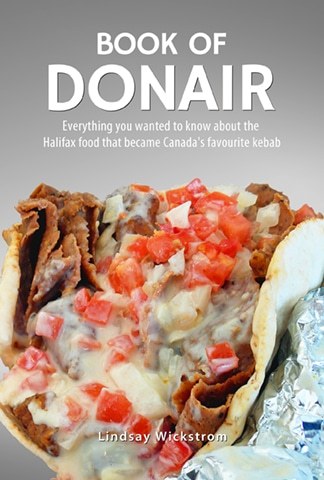
Top 5 Takeaways from Book of Donair:
- The Donair is part of the doner kebab family, along with shawarma, gyros, tacos al pastor and many other variations across many countries from Brazil to Vietnam to Australia. It is named after the doner kebab (which originated in Anatolia, Turkey), but is most closely related to the gyros. Doner kebab means “rotating grilled meat” and refers to the conical meat on the vertical spit (though in many places it is now synonymous with a sandwich/wrap). The words “shawarma” and “gyros” are basically translations of “doner” (to turn) in Arabic and Greek, respectively.
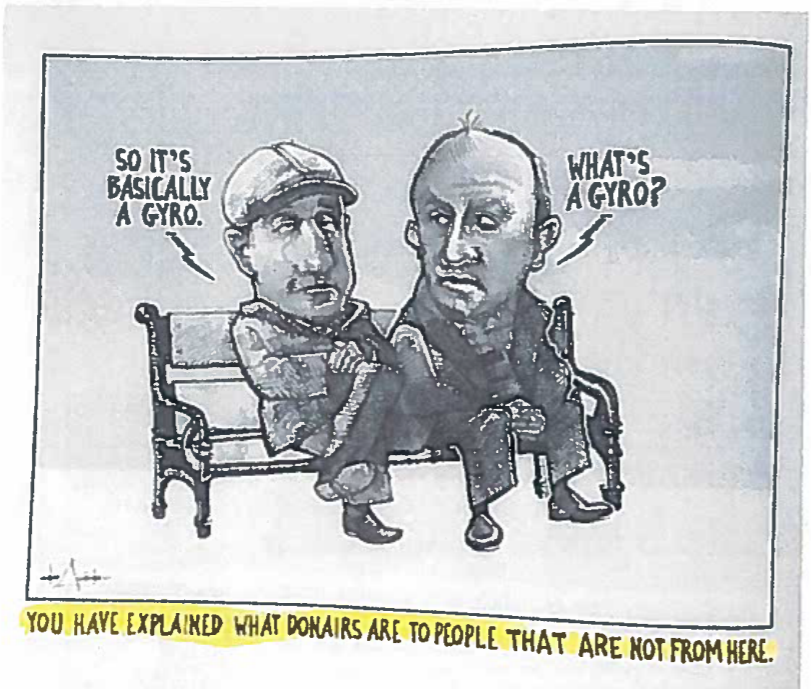
2. The Donair was invented in Bedford, Nova Scotia by a Greek immigrant who wanted to sell gyros.
This much you can glean from just about any online source. Peter Gamoulakos , who grew up in a town near Sparta, immigrated to Canada in the 1950s. He worked as a cook/chef in various restaurants and eventually got into the pizza business, running Velos on Elm St. and then opening Velos Sunnyside (in Bedford) with two partners. It was at Velos Sunnyside where he tried to sell Greek street foods: souvlaki and gyros. Nova Scotians in the 1970s didn’t like the strong flavours of lamb, garlic and yogurt so Gamoulakos adapted the recipe to local tastes.
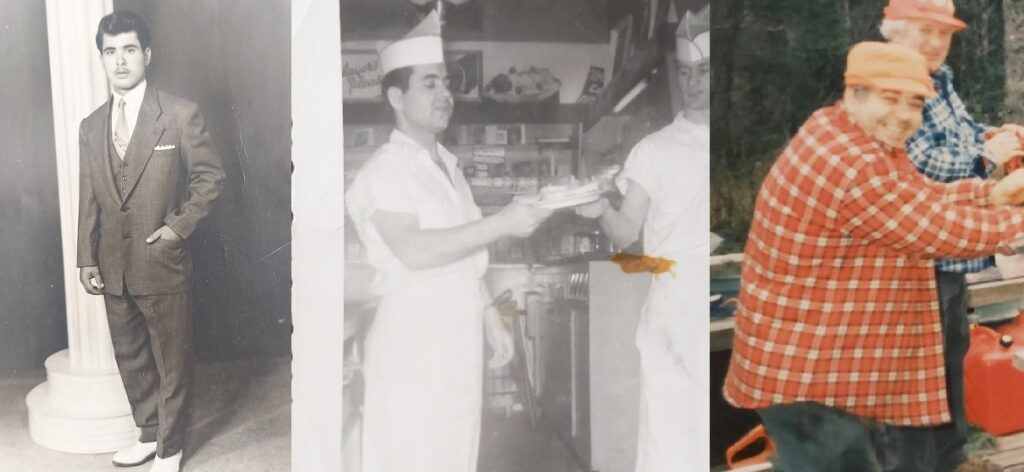
3. The Lebanese inherited the donair industry from the Greeks.
A lot of people assume the donair is a Lebanese food because most pizza/donair shops are Lebanese-run (although this changing with new waves of immigration). But the big wave of Lebanese immigration came after the Greek wave, and many Lebanese got jobs in donair shops, like Tony Helou (of Tony’s), and Chawki El-Homeira (who brought the donair to Edmonton). Many of the Lebanese who came to Halifax were butchers by trade, and their butcher/groceries were gradually converted to donair/pizza shops (ex. Bash Toulany, Leo Toulany). Of course, the donair was similar enough to a shawarma that the cultural exchange was natural.
4. The donair was popularized in Edmonton in the early 1980s and has divergently evolved from the Halifax Donair. Edmontonians are passionate about donairs and claim to have more donair shops than Halifax (I don’t think the claimants realize that most Halifax donairs are sold in pizza shops and many don’t have “donair” in the name). There were also whimsical discussions in Edmonton about making the donair their official food (which led to Halifax doing so in 2015). The Edmonton Donair is wrapped tightly in a stronger foil, and served in a plastic bag to collect drippings. It contains lettuce, and patrons have a standard choice of “sweet or garlic” sauce (though more toppings and sauces are generally available). Chicken donairs, which do not exist in Halifax, are also prevalent.


Controversies in Book of Donair:
- King of Donair did not open on Quinpool Road in 1973.
I know this is the popular history and part King of Donair’s branding, but when I found an article in the archives from 1978 called “Donairs Find a Firm Foothold” it changed everything for me:
“{Peter Gamoulakos} and one of his brothers opened their first store in Bedford, then called Mr. Doner, where the famous Greek sandwich was introduced. Tremendous success led to expansion: 5 stores were opened in 1976 with locations on Quinpool Road, Robie St. , Dutch Village Road, Gottingen St. and Simpson’s Mall.”
The article says: “Mr. Gamoulakos brought the idea back with him when he returned from a Greek holiday in 1973”.
The word “donair” is first found in print in an advertisement for Velos in 1974. So it is likely that Peter Gamoulakos visited Greece in 1973 and started serving gyros at Velos shortly thereafter. The donair as we know it probably emerged in ’74, and Gamoulakos opened Mr. Doner in Bedford some time around then (it is unclear which spelling was used, with both “doner” and “donair” represented in public records).
The Mr. Doner on Quinpool Road did not open until 1976. It was rebranded as “King of Donairs” in 1978. It was sold to Nahas family (current owners) in 1989.
I was able to find public records (directories/Registry of Joint Stocks/Canadian Trademark Database) and employee accounts to support this timeline. Yet I still come across people who swear they had their first donair on Quinpool Road in 1973.
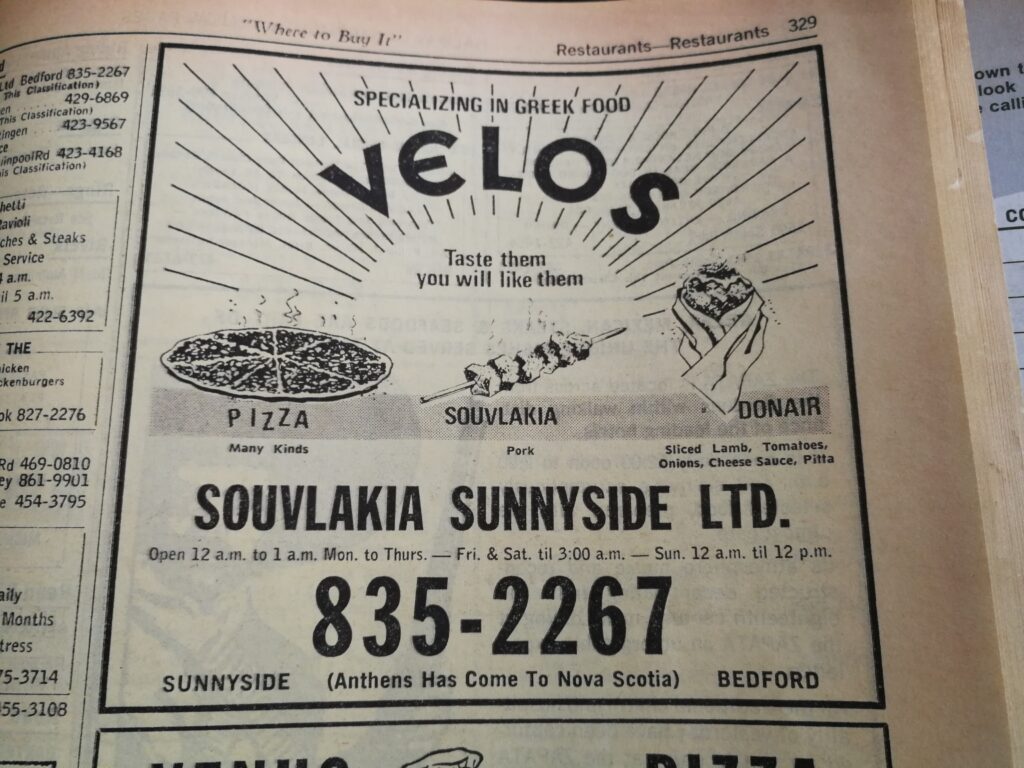
2. Donair Purity is a Myth
Nova Scotians are so gatekeepy about donairs and what can go on them (not lettuce!) and there are heated debates about the “authentic Halifax donair”. But we are not eating the same donairs that people were eating in the 70s-90s. The first donairs were smaller (sold in pairs with a pop) and parsley was an original topping. The cones were house-made and 100% beef until they started switching to industrial specialists in the ’90s (99% of donair meat in Halifax today comes from either Bonte, Mr. Donair or Leo’s Meats) and have fillers and preservatives. Back in the day, the meat was shaved off the spit right into the pita, but in the 2000s the government mandated the twice-cooking method. This was highly controversial among purists at the time, but nowadays people seem to prefer the crispy grilled meat. Oh, and Peter Gamoulakos is quoted as saying the meat must be served the same day or else it’s “good for nothing”. But nowadays the meat is saved and stored in the fridge and grilled up the next day.
With that said, I’m still not putting lettuce on my donair.
Mysteries in Book of Donair:
These are things I haven’t been able to confirm, and my best theories:
- The Sauce
No, not the recipe. Let’s be clear: the original donair sauce was and should be evaporated milk, sugar, garlic powder, and vinegar. You can make a version with sweetened condensed milk but it’s just not the same (and restaurants don’t do this because it is more costly).
The mystery of the sauce is the when and why:
When:
Gus Tectonides was an employee of Velos Sunnyside from April-August 1974. According to his account, Peter Gamoulakos had started blending beef into the lamb at that point, but hadn’t yet come up with the famous sweet sauce. The advertisement that first introduced the donair describes the sauce as “cheese sauce”. In the book, I speculated that Gamoulakos was trying to sell yogurt as “cheese sauce” to make it more appealing. But after studying a bit of food science at MSVU, I’m now of the opinion that Gamoulakos saw donair sauce as a sort of cheese. After all, you make cheese by adding vinegar (or rennet) to heated milk to denature the whey protein, producing coagulated curds. Similarly, vinegar denatures the evaporated milk, which curdles and forms networks of delicate protein strands that thicken the sauce. There you have it: donair sauce = cheese!
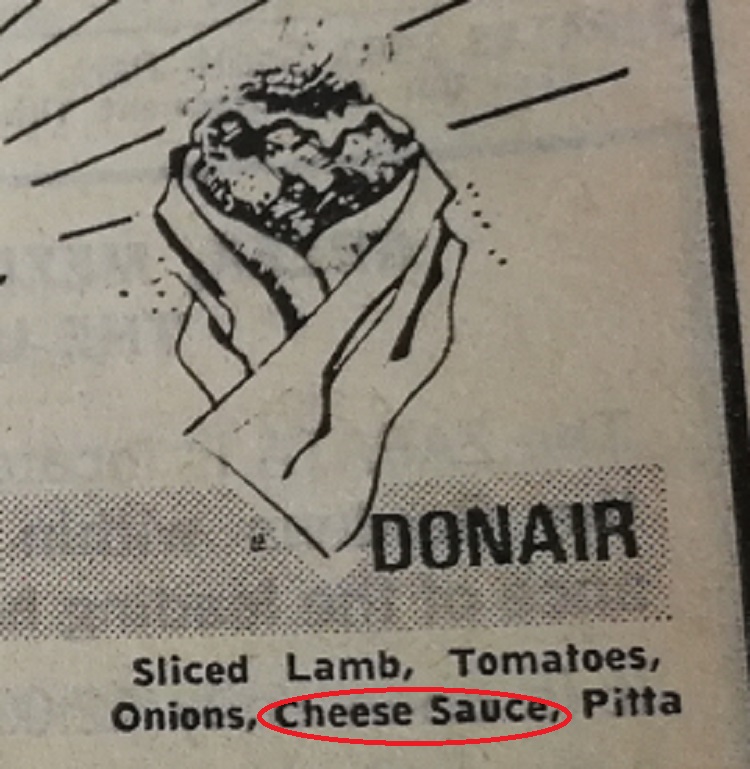
But why?
My theory is that Peter Gamoulakos saw the success of Chinese Food in Halifax in the 1970s, with the post-bar crowd lining up at the Garden View restaurant every weekend for fried won tons and egg rolls – always accompanied by sweet sauces. Sweet and sour chicken balls, anyone? He came to the conclusion that locals like sweet sauces on savoury items, and decided to try out a sweet sauce on his gyros. It worked!
2. The Name
The name “donair” comes from “doner” but if Peter Gamoulakos was trying to sell gyros, why did he call them donairs? The popular account (variations of it vaguely recalled by former partners/family) was that when he was asked what the new food was called, he turned around and saw the word “doner” on his imported rotisserie machine. He responded: “doner”.
But there is evidence that when he went to Greece in 1973, the words “doner” and “gyros” were both in use. He also told the Chronicle Herald: “Donairs, as well as souvlakia, are on every street corner in Greece”. So it would seem that he understood the word “donair” or “doner” to mean anything in the doner kebab family.
The spelling came a little later. Halcraft Printers say that it was Leo Arkelian who suggested an Anglicized spelling when they were making an advertisement for Velos. This is likely the very first time it was used in print, in the 1974 advertisement pictured above.

3. Why do some Cape Bretoners insist the donair was invented there?
Every once and a while I’ll come across some claim that the inventor of the donair is somehow contested, but nobody has ever been able to provide any evidence of any other invention stories. My favourite is the myth that the donair was invented in Cape Breton. I chatted with Mike Nicoletopoulos of the Island Greek family who claims it was Island Greek that introduced the donair (and pizza burger) to Cape Breton (well after it was invented in Halifax). So I’m satisfied with that.
4. Why is the donair so similar to the American gyros? And why is the Greek gyros so different?
If you go to Greece today, you’ll notice that gyros are made with slabs of pork (similar to shawama) and include French fries along with tzatziki, onions and tomatoes. But the gyros seems to have came to America in the ’60s as a ground lamb cone. How could this be? I consulted with a certain Dr. Nick Nicolas for help with linguistics and Greek language web sites. It seems that the early gyros in Greece were made of ground lamb and called “doner”. For various cultural, food safey, and economic reasons, the ground lamb was replaced with pork and the word “gyros” eventually replaced “doner”. But the gyros had spread to America before these changes took place on a broad scale. Similarly, Peter Gamoulakos visited Greece in 1973 and would have encountered the ground lamb version which he introduced to Canada.
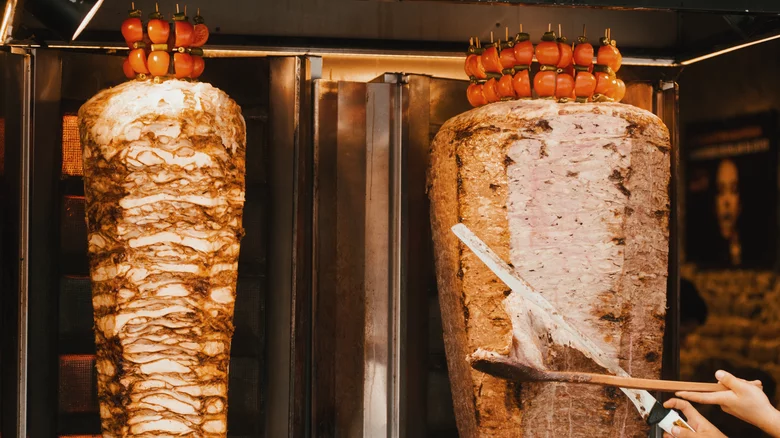
Well, that’s all I’ve got. Let me know if you have any questions, legends, controversies or mysteries that further complicate my donair history!

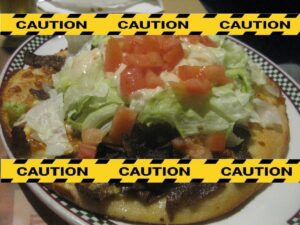

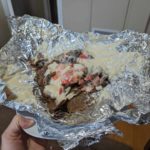


Leave a Reply